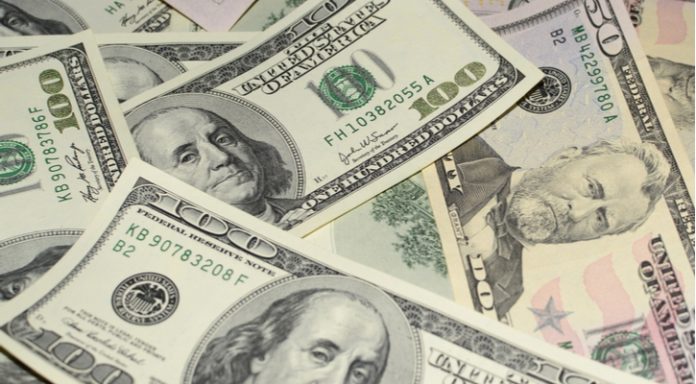The decline of the pound versus the dollar accelerated on Wednesday as fears of a no deal Brexit grew. The pound US dollar exchange rate dropped to a fresh 11 month low at US$1.2854.
| What do these figures mean? |
|---|
|
When measuring the value of a pair of currencies, one set equals 1 unit and the other shows the current equivalent. As the market moves, the amount will vary from minute to minute. For example, it could be written: 1 GBP = 1.28934 USD Here, £1 is equivalent to approximately $1.29. This specifically measures the pound’s worth against the dollar. If the US dollar amount increases in this pairing, it’s positive for the pound. Or, if you were looking at it the other way around: 1 USD = 0.77786 GBP In this example, $1 is equivalent to approximately £0.78. This measures the US dollar’s worth versus the British pound. If the sterling number gets larger, it’s good news for the dollar. |
News that the UK cabinet was stepping up contingency plans for a no deal Brexit sent the pound tumbling across the board once again. Pound traders are growing increasingly concerned that the UK will crash out of the European Union without a Brexit deal. Investors are increasingly concerned that talks between Britain and Brussels will fall apart over the coming months.
The Bank of England Governor, Mark Carney, last week weighed into the Brexit debate, warning of the negative impact of Brexit. International Trade Secretary Liam Fox then fanned concerns earlier this week by confirming that a no deal hard Brexit was looking more likely than a deal being agreed.
Trade bosses and leading economist have all warned that a no deal hard Brexit could hit the UK economy hard. As the possibility of a hard Brexit increases, the value of the pound decreased.
| Why is a “soft” Brexit better for sterling than a “hard” Brexit? |
|---|
| A soft Brexit implies anything less than UK’s complete withdrawal from the EU. For example, it could mean the UK retains some form of membership to the European Union single market in exchange for some free movement of people, i.e. immigration. This is considered more positive than a “hard” Brexit, which is a full severance from the EU. The reason “soft” is considered more pound-friendly is because the economic impact would be lower. If there is less negative impact on the economy, foreign investors will continue to invest in the UK. As investment requires local currency, this increased demand for the pound then boosts its value. |
This week has been a very quiet week on the UK economic calendar, leaving investors little else other than Brexit headlines to focus on. Today, once again there is no high impacting data to distract investors today, o any Brexit headline is likely to direct the pound.
US – Sino Trade Tensions Rise
The dollar traded higher versus the pound in the previous session as investors digested a double whammy of tit for tat measures by China in the unfolding trade war and sanctions by the US on Russia.
On Wednesday both the US and China announced 25% trade tariffs on US$16 billion worth of imports, as the trade war escalates. There are now trade levies announced on $100 billion worth of imports. However, of these levies many haven’t actually been imposed yet and are still at consultation phase. This means that the real impact of these announcements have not yet been felt.
Moving into Thursday, the dollar is trading slightly higher as geopolitical tensions increase with Russia. The US announced that it will place punitive sanctions on Russia for its part in the Salisbury poisoning case. Increased geopolitical tensions tend to see investors move into the dollar, for its safe haven status.
This publication is provided for general information purposes only and is not intended to cover every aspect of the topics with which it deals. It is not intended to amount to advice on which you should rely. You must obtain professional or specialist advice before taking, or refraining from, any action on the basis of the content in this publication. The information in this publication does not constitute legal, tax or other professional advice from TransferWise Inc., Currency Live or its affiliates. Prior results do not guarantee a similar outcome. We make no representations, warranties or guarantees, whether express or implied, that the content in the publication is accurate, complete or up to date. Consult our risk warning page for more details.
This article was initially published on TransferWise.com from the same author. The content at Currency Live is the sole opinion of the authors and in no way reflects the views of TransferWise Inc.





